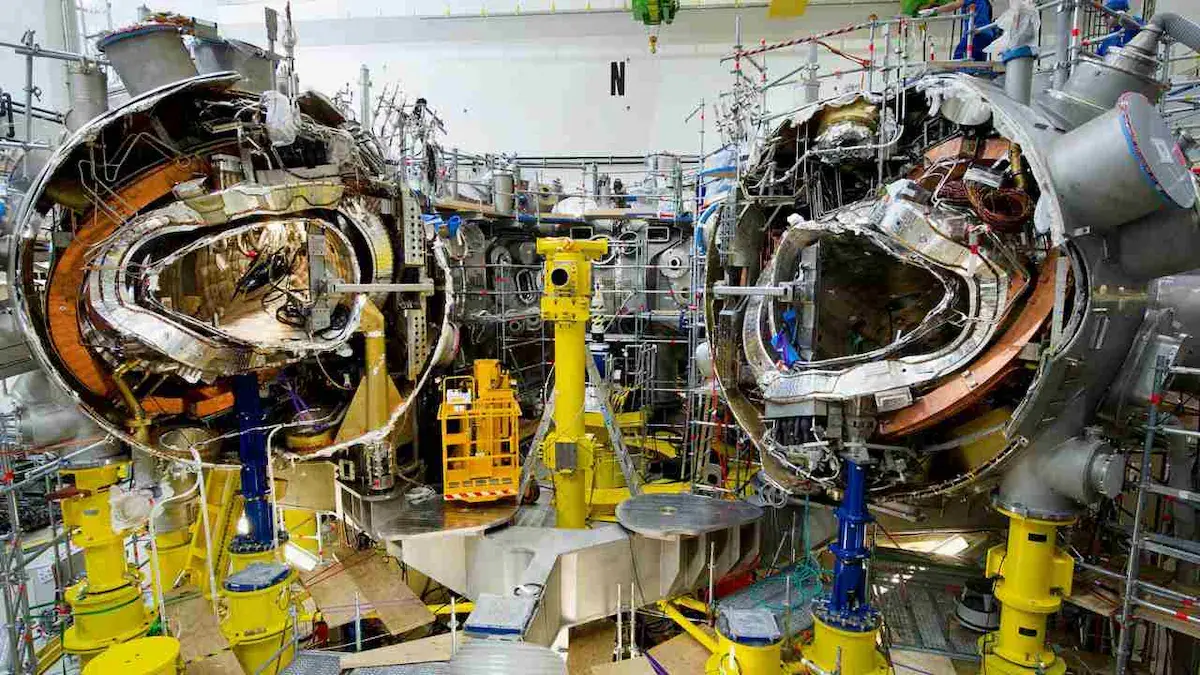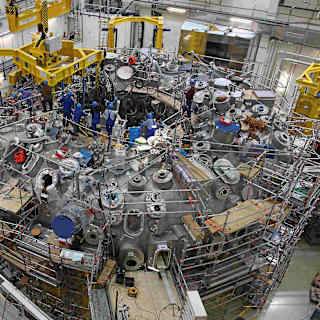In a momentous breakthrough that could reshape the trajectory of global energy, Germany’s Wendelstein 7-X, the world’s largest stellarator-type fusion reactor, has set a new world record in sustained plasma performance. With a historic 43-second plasma pulse achieved on May 22, 2025, researchers have taken a major leap toward realizing the dream of clean, abundant, and sustainable fusion energy.
This achievement is not just a milestone for Germany or Europe, it marks a turning point in fusion science, positioning stellarators as powerful contenders in the race toward practical fusion reactors.
A Historic Fusion Performance

The Wendelstein 7-X reactor, based at the Max Planck Institute for Plasma Physics in Greifswald, Germany, achieved what many thought would remain tokamak territory. During the 43-second experiment, it sustained a plasma with a world-leading triple product, a critical performance indicator in fusion research that combines plasma density, temperature, and confinement time.
While other reactors have reached impressive triple product levels, especially tokamaks like Japan’s JT-60U and the UK’s now-decommissioned JET, their pulses typically lasted only a few seconds. Wendelstein 7-X not only matched those fusion conditions but sustained them nearly ten times longer.
This places Germany firmly at the forefront of international fusion efforts, showing that stellarators are not just theoretically promising, they can now deliver high-performance results.
Engineering Precision Behind the Breakthrough
The success of this record-breaking run wasn’t just about power but it was about precision. Multiple advanced systems had to work in flawless harmony to maintain plasma stability for such an extended duration.
First, continuous fueling was made possible by injecting 90 frozen hydrogen pellets, each just a millimeter in size, into the plasma at speeds approaching 800 meters per second, faster than a rifle bullet. This constant refueling kept the plasma density at optimal levels throughout the experiment.

Simultaneously, microwave heating pushed the plasma temperature to 30 million degrees Celsius, recreating the intense conditions found in the heart of stars. This heating was tightly coordinated with plasma control systems to maintain equilibrium.
A significant factor in the breakthrough was advanced magnetic confinement. Stellarators like the Wendelstein 7-X use intricately shaped magnetic fields, generated by precisely designed superconducting coils to keep the super-hot plasma from touching reactor walls. Improvements in these configurations and the deployment of external stabilization magnets allowed the reactor to maintain plasma conditions longer and more efficiently than ever before.
Notably, during the same operational campaign, Wendelstein 7-X also achieved a separate milestone, 1.8 gigajoules of energy turnover during a six-minute plasma operation. This surpassed even the output of China’s highly publicized EAST tokamak and established a new record in energy throughput for stellarators.
Why This Record Matters
While fusion energy has long been heralded as the “holy grail” of clean power, offering an energy source as powerful as the sun without carbon emissions or long-lived radioactive waste but it remains a technically formidable challenge. Yet this record moves the dream significantly closer to reality.
The Wendelstein 7-X achievement demonstrates that long-duration, high-performance fusion plasma is possible, not just in theory but in practice. This is especially critical because future commercial fusion power plants will require stable, steady-state plasma operation for hours, not seconds. Stellarators, by design, are better suited for continuous operation than tokamaks, which operate in short bursts.
Professor Thomas Klinger, Head of Operations at the facility, hailed the accomplishment as “a tremendous achievement,” noting that reaching such a high triple product over extended durations marks a significant advance toward a fusion-powered future.
A Giant Step on the Road to Fusion Energy
Although fusion still has a long way to go before it becomes a commercially viable energy source, current experiments still consume more energy than they produce, each breakthrough chips away at the barriers that stand in the way.
Germany’s fusion community now joins a growing global push toward viable fusion energy, alongside efforts like ITER in France, SPARC in the U.S., and KSTAR and EAST in Asia. But with this record, Wendelstein 7-X has put stellarator technology back in the limelight, showing that it’s not just a theoretical alternative to tokamaks, but potentially a superior path to continuous, stable, and clean energy production.
As researchers prepare the reactor for future upgrades and experiments, the dream of tapping into the same energy that powers the stars feels more tangible than ever. This record doesn't just mark a peak in scientific achievement, it brings the world one step closer to a revolution in how we power our civilization.


Discussion
Start the conversation
No comments yet
Be the first to share your thoughts on this article. Your insights could spark an interesting discussion!